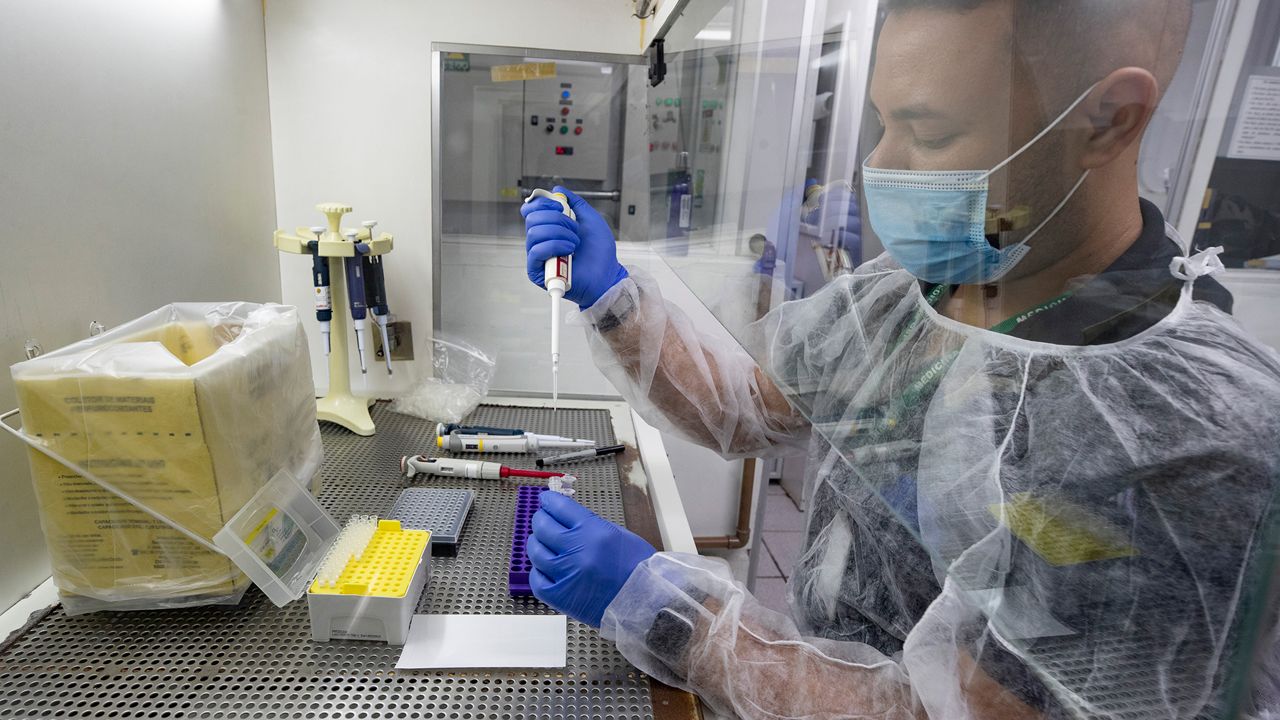COLUMBUS, Ohio — The Centers for Disease Control and Prevention (CDC) reported 26 more Ohio cases of the variant first discovered in the United Kingdom, according to a Sunday evening update.
The state now has 91 CDC-confirmed cases of the more contagious, more deadly strain of the virus — an increase from 65 in Friday’s update. A week ago, the CDC was reporting 33 Ohio cases of the variant.
The agency’s database — which is updated on Sundays, Tuesdays, and Thursdays — tracks three highly contagious COVID-19 strains: The variant discovered in the United Kingdom (B.1.1.7), a variant that is surging in Brazil (P.1), and a variant discovered in South Africa (B.1.351).
The CDC has recorded one P.1 case and 0 cases of B.1.351, but officials fear these variants are spreading undetected in Ohio.
The B.1.1.7 variant was behind a winter surge in the U.K., but vaccines perform well against the variant and cases have been plummeting in the U.K., according to officials. As of Sunday evening, 4,690 cases have been reported in the United States. Ohio’s viral surveillance pales in comparison to that of states that have documented hundreds of variant cases. Ohio is responsible for .97% of U.S. sequencing uploaded to a research database for documenting mutations.
University Hospitals Health System in Cleveland has sequenced 64 cases of the variant, according to that database. On Wednesday and Thursday, the health system’s Translational Laboratory submitted 51 B.1.1.7 samples collected between Feb. 24 and March 8.
With the additional cases, 4.3% (74) of all sequenced samples from Ohio (1,743) are B.1.1.7 infections.
The other research teams that have reported cases of the variant are from the CDC (6), Ohio State University (3), and the Ohio Department of Health (1).
UH researchers have background with applications of sequencing to cancer, virology and microbiology clinical samples, using machine-learning algorithms. The B.1.351 variant has been shown to evade life-saving antibody treatments, and this variant is the most threatening to vaccines. South Africa, where the variant was first detected, stopped administering the AstraZeneca vaccine in early February because it did not work well against the variant. There have been 108 cases in the U.S, according to the CDC.
P.1 shares similar properties with B.1.351 and experts are concerned by early evidence that in Brazil, where the variant is surging, people who recovered from infections with previous strains are becoming reinfected with this one, but further studies are underway with regard to vaccine efficacy. Pfizer reported last week that its vaccine is highly effective against the variant. There have been 17 CDC-confirmed cases in the U.S.
P.1 and B.1.351 are more difficult to track than B.1.1.7 because analysis of PCR test results can indicate that a sample may be the variant. Some labs are sending off samples with that hint — s-gene dropouts — for full sequencing to identify the strain.
Ohio officials have echoed CDC warnings that the B.1.1.7 variant could become the dominant strain of COVID-19 in a matter of weeks.
COVID-19 has been declining in Ohio since vaccines arrived in December, but the rapid emergence of the B.1.1.7 variant has led the state to caution that hopes for a normal summer with larger gatherings come with an “asterisk.”
The good news: So far, officials said vaccines appear to be slowing the spread of COVID-19 more than variants are accelerating it.






